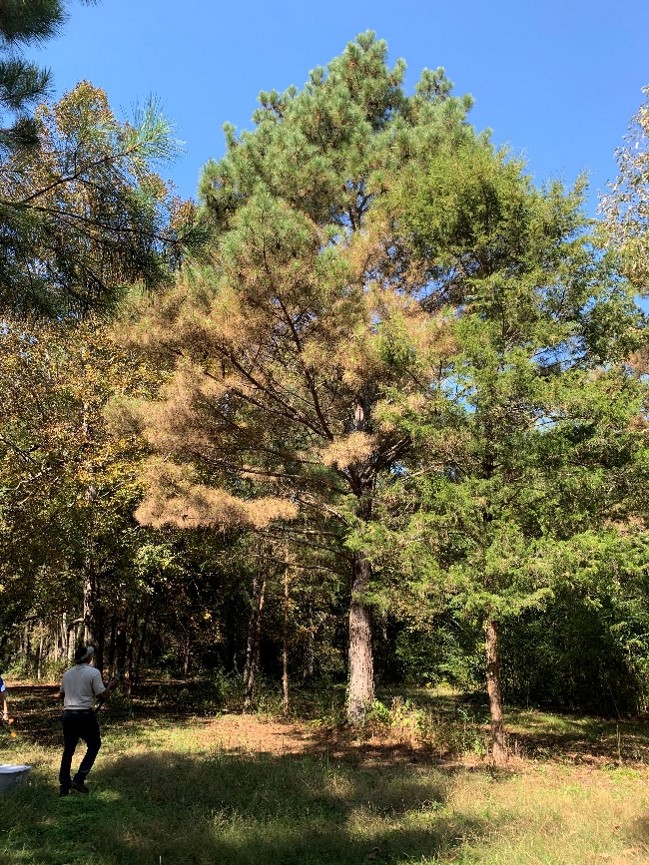Posted: 07/14/2022

Since early spring, the Alabama Forestry Commission (AFC) has been receiving phone calls from landowners and the public regarding pine needles suddenly turning brown. Many of these calls have been coming from counties in the northwest and northeast regions of the state. The culprit of the needle discoloration is believed to be the fungal disease known as brown spot needle blight. To date the disease has been confirmed in 36 of 67 counties in Alabama.
Historically, this disease has only infected longleaf pines (Pinus palustris). Brown spot needle blight can be killed using prescribed burns. However, this method is only effective for longleaf pine seedlings. In the last few years, the disease has also begun to infect loblolly pines (Pinus taeda) in young and mature stands. The cause for this change in behavior of the disease has yet to be determined, but it can be speculated that it may be a new sub-species that has evolved from the original fungal pest.
The first sign of infection is discoloration of the needles. Infected needles will contain circular lesions with a brown spot surrounded by a yellow halo. Over time, the infected area will turn brown with a dark red or dark green border. The discoloration begins in the lower portion of the crown and moves up as the disease spreads by rain and wind events. An easy way to identify the disease is if the pine needles look as if they have been scorched by fire, even though there has been no burn. This disease can reoccur over a couple of years and cause mortality to infected pines.
If you believe your pines are infected with brown spot needle blight and want needles tested, please contact your local Alabama Forestry Commission office. Laboratory tests can confirm the presence of the disease. Symptomatic needles are collected and brought to the Forest Health Dynamics Laboratory at Auburn University for confirmation.
The mission of the Alabama Forestry Commission is to protect and sustain Alabama’s forest resources using professionally applied stewardship principles and education, ensuring that the state’s forests contribute to abundant timber and wildlife, clean air and water, and a healthy economy. For more information about the fire situation in your area or any other forestry related issues, contact your local Alabama Forestry Commission office or visit the AFC website at www.forestry.alabama.gov


